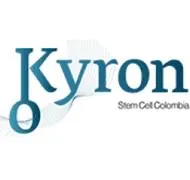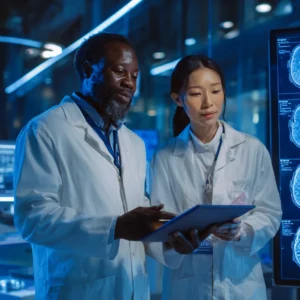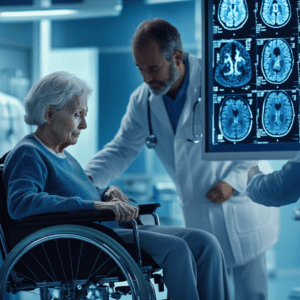Treatments using stem cells for multiple sclerosis (MS) are gaining attention, with hematopoietic stem cell transplants (HSCT) and mesenchymal stem cells (MSCs) showing the most promise.
If you want to know about the actual treatment process for MS, our article here goes into more depth. Or set up a conversation with our team here. They can guide you in deciding if it’s the right fit, help you choose the best clinic & region, and even assist you in securing some great discounts!
Current Trials
1. Hematopoietic Stem Cell Transplant (HSCT)
In Mexico, this trial involves 120 patients with relapsing-remitting MS, and early results are promising! Some patients have stopped experiencing disease relapses, indicating that HSCT may be effective at halting MS progression. The treatment works by resetting the immune system, but long-term data is still needed to determine how long these benefits last.
2. HSCT for MS
In Sweden, a smaller trial of 50 patients with aggressive MS is also showing encouraging signs. Patients have experienced a reduction in disease activity, meaning the immune system “reset” may be effective, even for severe cases. However, researchers are still collecting long-term data to confirm how lasting the benefits are.
3. Mesenchymal Stem Cells (MSCs)
In South Korea, a trial with 14 MS patients looked at the effects of MSCs derived from fat tissue. The results showed reduced inflammation and nerve repair in 8 out of 14 patients, although the improvements weren’t consistent across the board. MSCs show potential, but more studies are needed to ensure consistent outcomes.
Best Stem Cell Therapy clinics for MS
We don’t let any clinic just sign up or pay to be listed.
We speak to every clinic directly and review their medical team, the treatments they offer, how their stem cells are sourced and how they follow up with patients after treatment.
We also review licensing documents to confirm they meet the legal and medical standards of the country they operate in. For example, whether cells are processed in a GMP-certified facility or if they provide documentation on stem cell quality.
Clinics must also agree to let us collect and publish independent patient reviews. Both positive and negative.

Why Use Alt Treatment?
We don’t just list clinics, we help you choose the right one, get the best pricing and support you through the entire journey. For free.
Compare with Confidence: Get clinic matches based on your condition, location, and budget.
Ask the Right Questions: Know what to ask before committing
Save on Treatment: Unlock exclusive discounts on vetted clinics and follow-up care.
We’re With You After Treatment: We check in post-treatment and help resolve any issues.
Travel & Visa Help: Need to travel for care? We can help with logistics, documents, and local tips.
Found a Clinic Elsewhere? We’ll check their licensing and track record for you, free of charge.
No Strings Attached: Even if you choose a clinic we don’t partner with, we’re still here to help you make the best decision.
Top Stem Cell Therapy Clinics in Colombia for MS

Alevy specializes in stem cell and exosome therapy, using umbilical cord-derived MSCs to treat a wide variety of conditions, from Diabetes, Multiple Sclerosis to Osteoarthritis & Orthopaedic injuries. Their medical team brings over 15 years of experience in pain management, tissue regeneration, and immune system modulation. With three world-class clinics in Medellín, Bogotá, and Pereira, you have options on where you want treatment!
View Full Profile
Kyron Stem Cells is a Stem Cell Therapy clinic that focuses on a variety of treatments, including joint pain, chronic fatigue, autoimmune issues, and overall wellness. The clinic is led by Dr. Carlos Rojas, who has been working with stem cells since 1991 and has over a decade of experience in functional and hormone-based medicine. He is known for creating treatment plans that are genuinely personalized, based on each patient’s biology and lab results.
View Full Profile4. Tisch MS Research Center – FDA Approved Phase II Trial
In New York, the Tisch MS Research Center conducted a Phase II trial with 50 MS patients, treating them with mesenchymal stem cells (MSCs). Many participants have experienced improved mobility and nerve function. However, researchers are keeping a close eye on how long these benefits last and whether follow-up treatments are necessary.
Summary of Current Trials
Across trials, HSCT and MSCs are showing exciting potential for multiple sclerosis. HSCT is emerging as a strong option for halting disease progression, particularly in relapsing-remitting and aggressive MS. MSCs, which focus on nerve repair and reducing inflammation, have promise but need more research to confirm their long-term effectiveness. Right now, the research is moving in the right direction, but long-term follow-up is key.
Previous Studies and Reviews
Study on Mice (2024)
A 2024 study published in Nature examined the potential of MSCs in repairing nerve damage in MS mouse models. The results showed promising remyelination and improved nerve function, although human trials are needed to see if the same effects apply to MS patients.
Review
MS can be frustrating and overwhelming to treat. We’re not here to hype miracle cures. Our goal is to help you decide for yourself if it’s worth exploring, risks involved & treatment prices around the world.
Get Free GuidanceNo pressure. No spam. Just honest advice to help choose the right clinic.
A comprehensive review published in 2023 delves into the effects of HSCT and MSCs for treating MS. This review highlights the success of HSCT in halting disease progression, particularly for relapsing-remitting forms of MS. However, it also stresses that long-term safety is still under evaluation, and more data is needed on MSCs to determine their role in nerve repair and regenerative therapy. The review emphasizes the importance of carefully monitored clinical trials to ensure both safety and efficacy.
2025 Narrative Review From Nature Reviews Neurology
This latest narrative review had some pretty positive stuff to say on the latest findings related to stem cell therapy treating MS.
It breaks down how autologous hematopoietic stem cell transplantation (AHSCT) is being used to treat multiple sclerosis (MS). Since this is a review, it doesn’t include original experiments but rather pulls together existing data. Keep in mind that reviews can sometimes be biased based on which studies are included and the authors’ stance on stem cell treatments versus traditional MS drugs.
Key Takeaways From this 2025 Review
How Well Does AHSCT Work?
- AHSCT works best for relapsing-remitting MS (RRMS), especially for patients who haven’t had success with standard treatments.
- It helps reduce relapses and inflammation, and in some cases, even puts patients into long-term remission.
- While it’s less effective for progressive MS—since it targets inflammation rather than nerve damage—some patients have been able to stop taking MS medications altogether after treatment.
How Does AHSCT Compare to Other MS Treatments?
- More effective than most standard disease-modifying therapies (DMTs) for aggressive RRMS.
- Can lead to long-term remission, unlike DMTs, which require lifelong use.
- Does not work well for progressive MS, where nerve damage—not inflammation—is the main issue.
- Aims to reset the immune system, while MS drugs mainly work by suppressing it.
What Are the Risks?
- Short-term side effects:
– About 10–20% of patients experience serious complications (infections, organ strain).
– However, 80–90% do not experience severe issues—close monitoring is still essential. - Death rate is low—less than 1% when done at experienced centers.
- Long-term risks are unclear, but studies show no unexpected complications after 5–10 years.
Final thoughts from this specific review
For people with aggressive relapsing-remitting MS who haven’t had success with standard treatments, AHSCT offers real hope. It’s not just another medication that suppresses the immune system—it actually “reboots” it, and for some, that means long-term remission. While there are some risks, the majority of patients recover without major issues, and with safety improvements, the procedure has a survival rate of over 99%. That said, it’s not a magic fix—it’s less effective for progressive MS, and higher stem cell doses seem to deliver better results.
What was interesting was that studies show that patients who receive higher doses of CD34+ stem cells (around 2–5 million cells per kg) tend to recover their immune systems faster and stay in remission longer. The data suggests that a higher stem cell count helps rebuild immune function more effectively and lowers the chances of MS coming back.
Looking into Stem Cell clinics for MS?
Browse verified stem cell clinics in Colombia, South Korea and more that we’ve already personally vetted.
Browse Verified Stem Cell ClinicsConclusion
Stem Cell Therapy, especially HSCT, is proving to be a powerful tool for halting the progression of multiple sclerosis. MSCs, while showing promise for nerve repair, still require more research before becoming mainstream. With positive trial results and ongoing studies, stem cell therapy is definitely something to keep an eye on as a potential breakthrough in managing MS.
Should you have it as a treatment right now? If you’re considering it, weigh the high costs, the limited long-term data, and the fact that results can vary from person to person. It might be best to use as a last resort!
If you’re deciding which country is best for you, or want to talk about clinics we’ve already vetted, fill out our form below. Our team will guide you with clear, honest answers.
What does Alt Treatment do?
Alt Treatment is a free, independent platform that helps you understand stem cell therapy & decide if it’s right for you.
We break down complex information into clear, honest guidance. When you’re ready, we can connect you with verified clinics that meet your needs, in the right location, and often with exclusive discounts.
There’s no charge to use our platform. No hidden fees. No pressure. Our main aim is to genuinely help you figure out if treatment is right & the best places to consider.
If you want to talk, fill out our form here & our personal concierge team will reach out.
Doctors primarily use Stem Cell Therapy to treat orthopedic issues like osteoarthritis and tendon injuries, repairing tissues and reducing pain. It’s also popular for treating blood disorders and is making waves in cosmetic treatments for skin rejuvenation. There’s other areas too – check out our Areas of Treatment page to see them all.
The price depends on the country, the type of treatment, and your negotiating skills! Costs can range from $5,000 to over $20,000. Need a hand snagging discounts or some support on your journey? Reach out to us here!
Stem Cell Therapy can be safe, but it depends on the type of stem cells used.MSCs, often used in orthopedic treatments, have shown a low risk of side effects, while ESCs and iPSCs carry a higher risk of tumor formation. Whilst short term side effects are pretty nominal, the long term side effects are still unknown.
Fill in your details below
For a discounted offer for Stem Cell Therapy!






